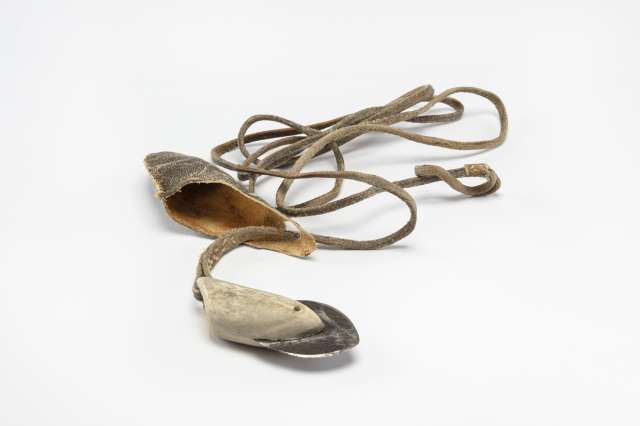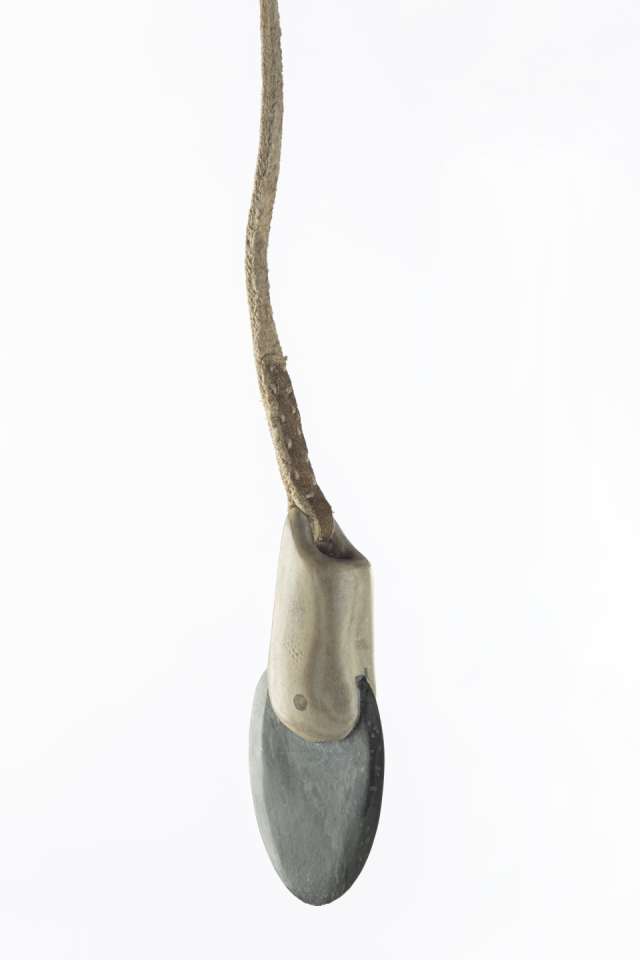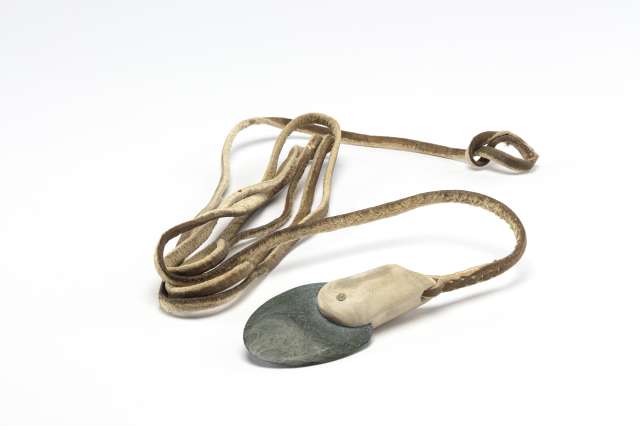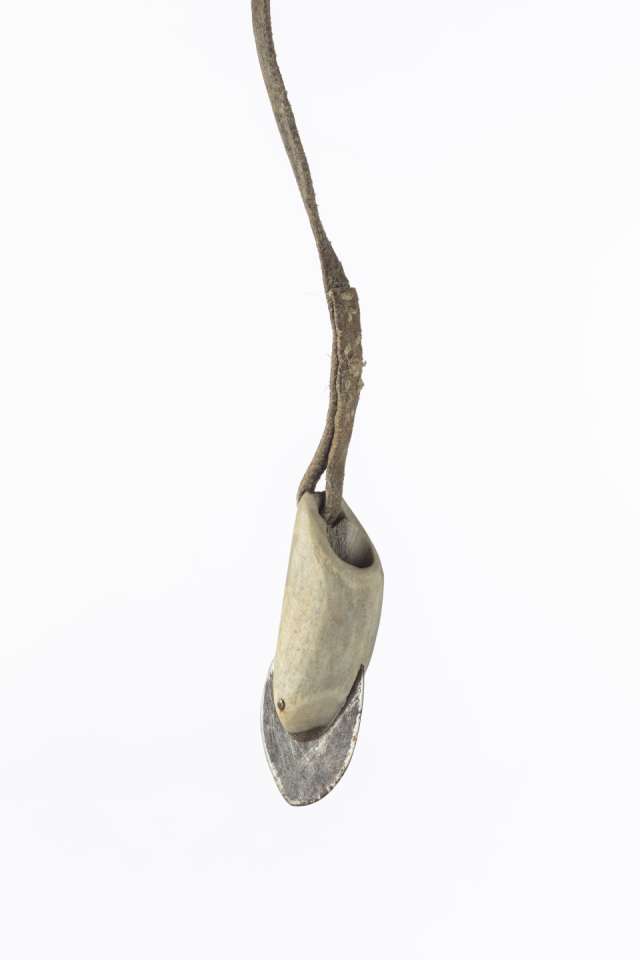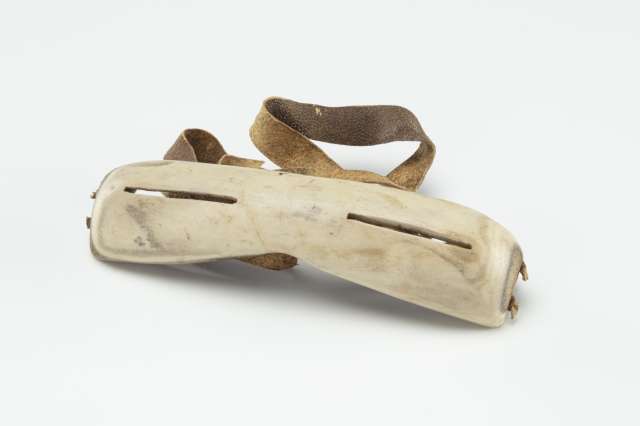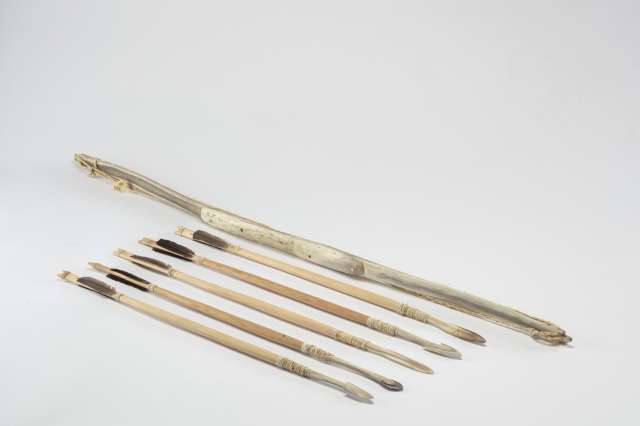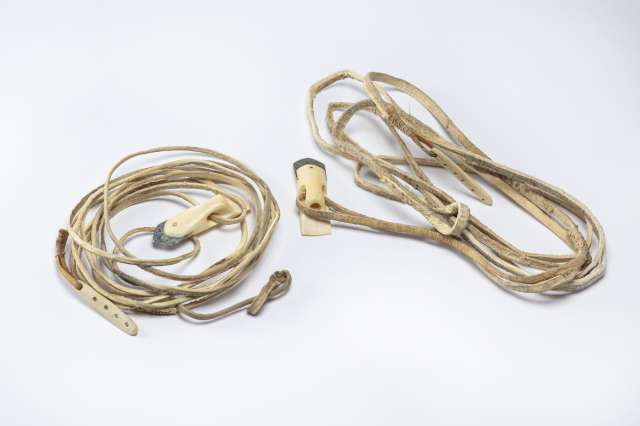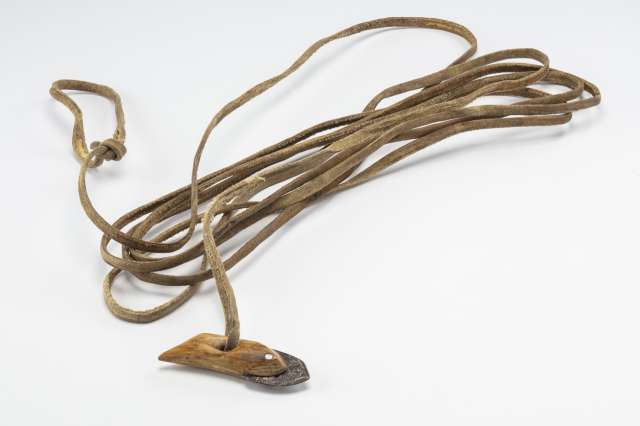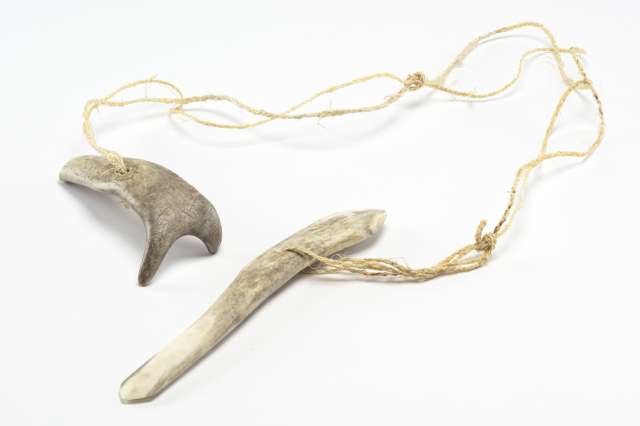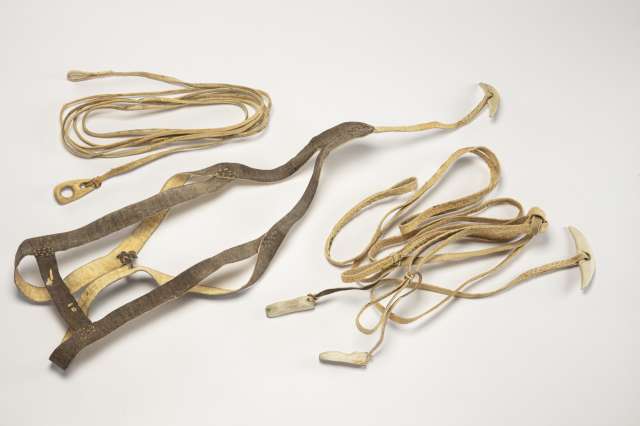Natalino Piugattuk: This looks like a sakku [in inuktitut]. It's called an anguvigaq [in inuktitut].
This is just an anguvigaq [Natalino points at the whole object on the table]. This is the blade.
To protect it, it's always placed here [Natalino inserts the blade into the pouch].
It's taken out only when used. It comes with a harpoon.
It has a rope. This harpoon is used for bigger catches,
like walruses or whales.
It's used for things you cannot just pick up. They don't just harpoon anywhere
with an anguvigaq. They aim for the kidney.
Those using this, the one using this
will harpoon the walrus or the whale
and says "aittaa" [in inuktitut], but we would say "alianait" [in inuktitut] if we harpooned something.
Those using an anguvigaq, it seems that always
when they strike, they say "aittaa!", hoping that it will be a good kill.
The hunter rejoices or he may have missed and look disappointed.
This isn't a sakku at all. Even if he misses the kill spot,
there's nothing to latch on to [Natalino blocks the harpoon head as if it was in the animal and pulls on the lanyard]. So if it doesn't die and he is the only hunter
and he doesn't have a rifle, he will just pull on this.
He could be pulling on it since he is harpooning it with an anguvigaq.
The hunter could sound disappointed even if he hits his target
or if he slightly misses. In the thought of missing,
he says "aittaa". The one harpooning with the anguvigaq
would behave in such a way. I saw it.
The anguvigaq. Once, I myself harpooned a
walrus with a knife. When I knew I would hit the kill spot,
I felt proud of myself. This was used by everyone
who did not have rifles, when they hunted with harpoons.
Some did it by stabbing, some used the anguvigaq.
Having been taught the kill spot, they aimed to kill
without shooting, without a rifle and using this.
It isn't called a sakku, it's an anguvigaq.
This has a wooden piece, the harpoon has a wooden piece
attached. We, the younger generation,
learned that when going to harpoon with the anguvigaq,
one would yell out and we would hurry to bring it to our elder.
Our elder would harpoon and we, the younger ones,
as we did not know too much, we would observe.
That was the way it was: when someone yelled it would be brought to him.
The elder who was going to harpoon would aim to kill
the animal. This was a normal practice.
As children we would observe. That was the way we were.

